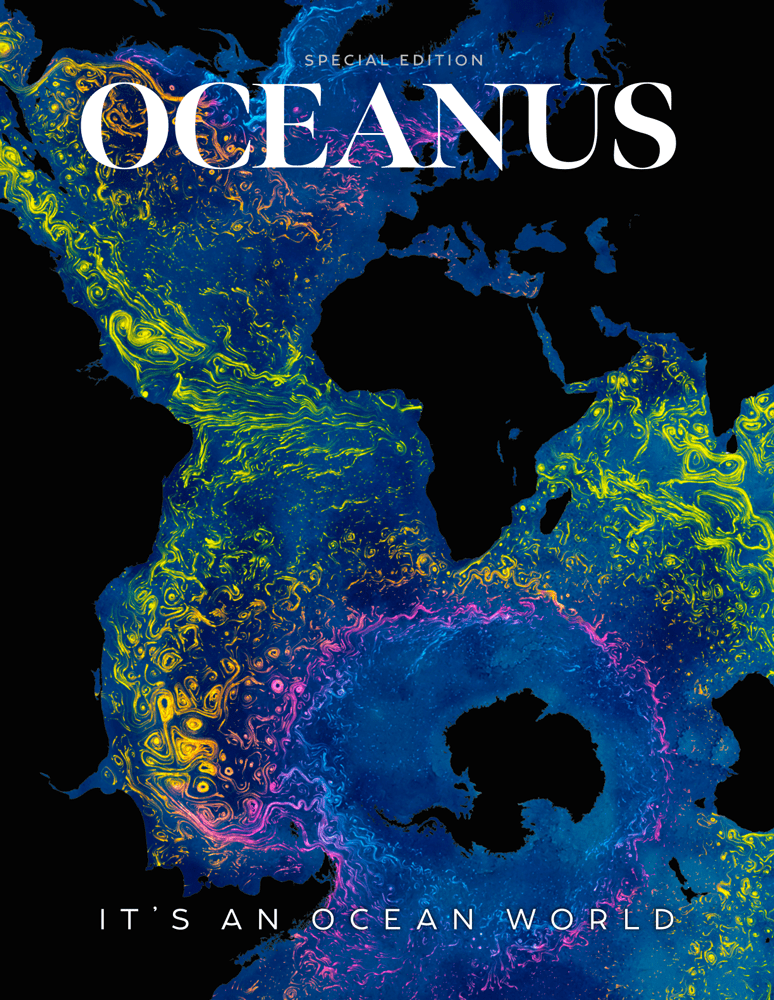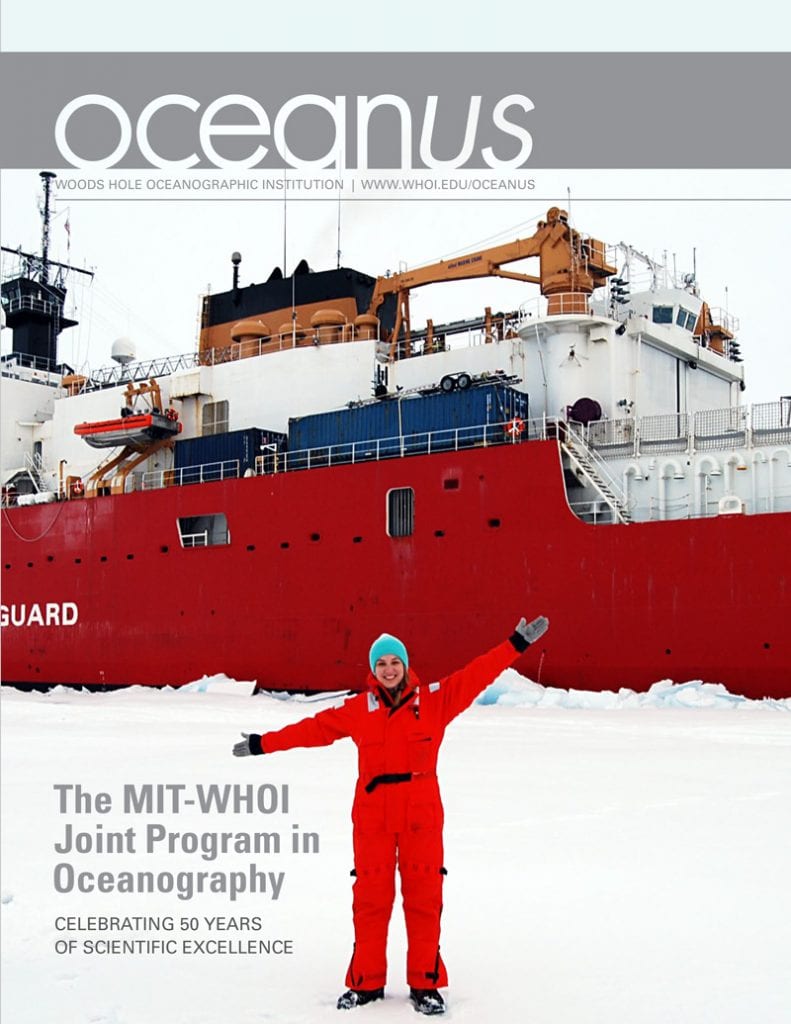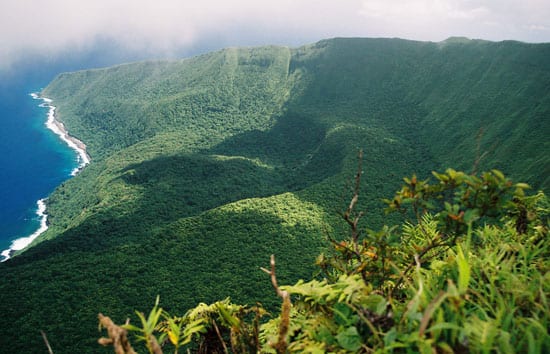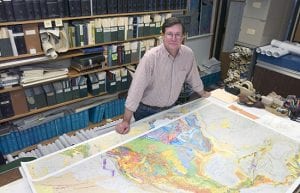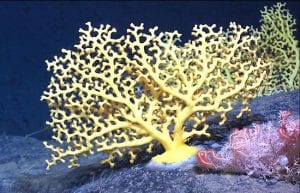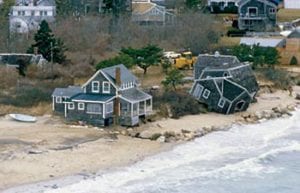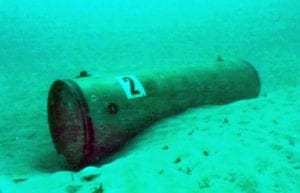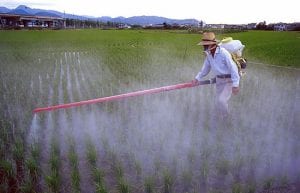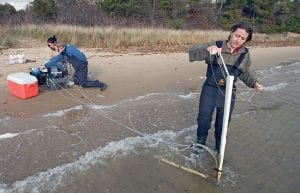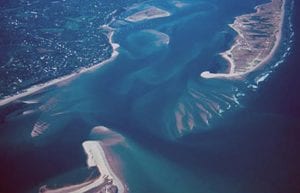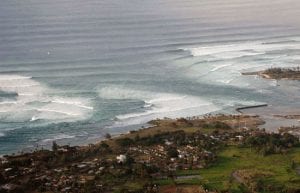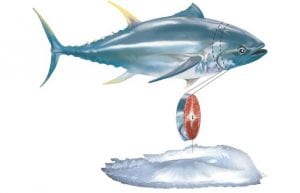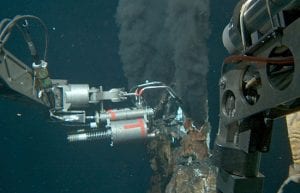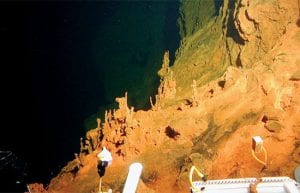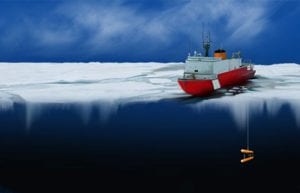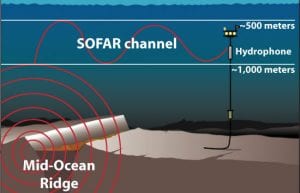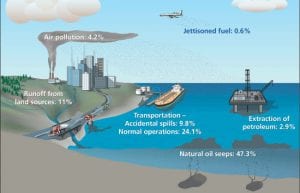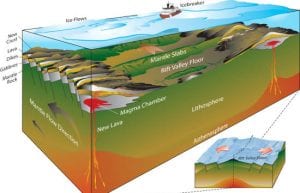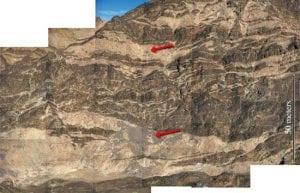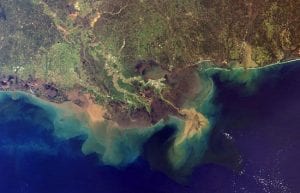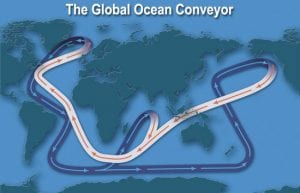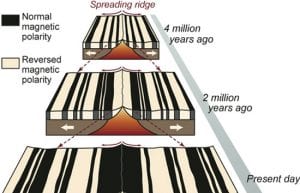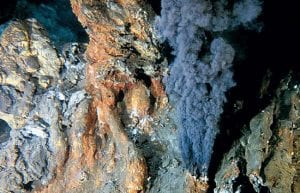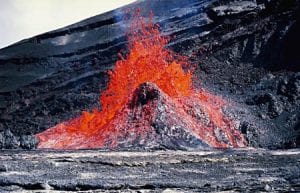How the Ocean Works
Rambling Atop an Active Volcano to Detect Telltale Rumbling Within It
With machete in hand and 60 pounds of satellite receiver and tripod on his back, Jeff Standish looked up into the lush tropical brush that covered the volcano, up a steep escarpment, and up again to the summit 3,000 feet above sea level. Then he turned to Rhea Workman, a graduate student in the WHOI/MIT Joint Program, and said, “We’re going up where?”
A “Thinking Map” of North America
For geologist Brian Tucholke, creating a new Geologic Map of North America was a 23-year…
Coral Gardens in the Dark Depths
The words "coral reefs" conjure up images of a tropical paradise: shallow, warm, aquamarine waters,…
The Coastal Ocean Institute
We are all stewards of the coastal ocean. For some of us, the connection to…
Where Are Mines Hiding on the Seafloor?
Eternally and incessantly, waves and currents stir up sand from the seafloor near the coast.…
Red Tides and Dead Zones
The most widespread, chronic environmental problem in the coastal ocean is caused by an excess…
Water Flowing Underground
Groundwater discharge appears to be an important factor for determining the chemistry of the coastal…
Rising Sea Levels and Moving Shorelines
Changes to the shoreline are inevitable and inescapable. Shoals and sandbars become islands and then…
Shaping the Beach, One Wave at a Time
For years, scientists who study the shoreline have wondered at the apparent fickleness of storms,…
In Tiny Ear Bones, the Life Story of a Giant Bluefin Tuna
The Atlantic bluefin tuna, Thunnus thynnus, is one of the fastest, most powerful and most…
The Deep Ocean Exploration Institute
This may sound like heresy, but for some of us at Woods Hole Oceanographic Institution,…
Living Large in Microscopic Nooks
Newly discovered deep-sea microbes rearrange thinking on the evolution of the Eart—and life on it.
Unique Vehicles for a Unique Environment
For climatologists and physical oceanographers, it is often said that the Arctic is a canary…
Ears in the Ocean
If you sought to delve into the forces that drive and shape the face of…
Mixing Oil and Water
In recent decades scientists have made substantial progress in understanding how oil enters the oceans,…
Earth’s Complex Complexion
Even as you read this, Earth's crust is continually being reborn and recycled in a…
Unraveling the Tapestry of Ocean Crust
Most people know that oceans cover about 70 percent of Earth's surface. Fewer people realize…
The Grass is Greener in the Coastal Ocean
Stretching from inland rivers and bays to the edge of the continental shelf, the coastal…
A Sea Change in Ocean Drilling
Stretching from inland rivers and bays to the edge of the continental shelf, the coastal…
How the Isthmus of Panama Put Ice in the Arctic
The long lag time has always puzzled scientists: Why did Antarctica become covered by massive…
Paving the SeafloorBrick by Brick
Most of Earth's crust is manufactured at the bottom of the sea. Deep beneath the…
The Remarkable Diversity of Seafloor Vents
Since 1982, I had spent most of my waking hours examining pieces of seafloor vent…
When Seafloor Meets Ocean, the Chemistry Is Amazing
Scientists are discovering that abundant quantities of methane gas are continually seeping from the seafloor…
Conduits Into Earth’s Inaccessible Interior
Jules Verne wrote about a way to journey to the center of the earth, but…
